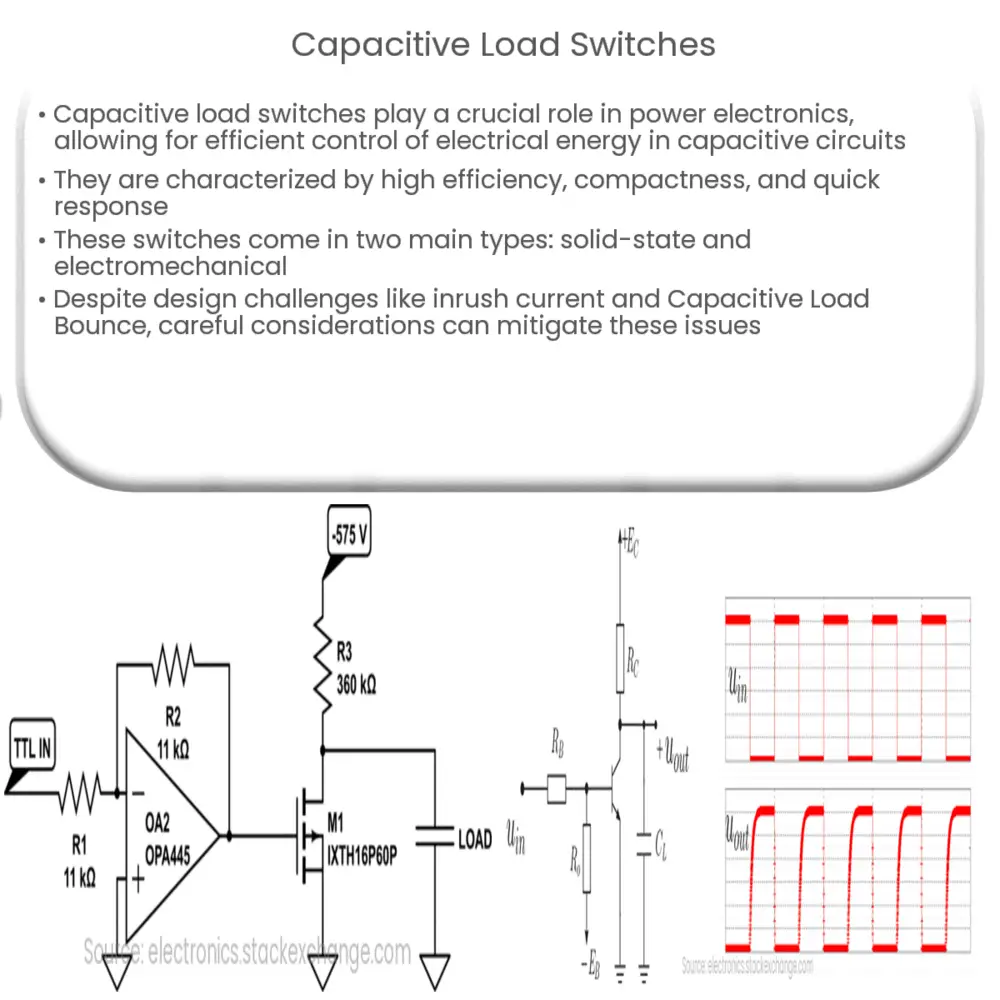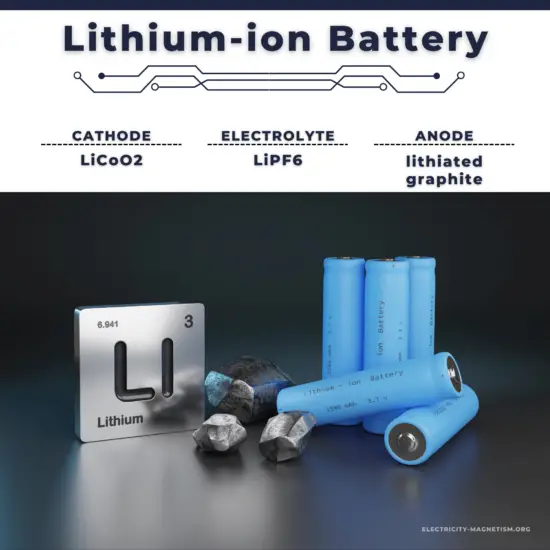Explore the world of capacitive load switches, their working principles, types, applications, and design considerations in our detailed guide.

Introduction to Capacitive Load Switches
Capacitive load switches represent a vital segment within the broad landscape of power electronics. These specialized switches control the flow of electricity in circuits involving capacitive loads – typically consisting of devices like capacitors, which have the unique ability to store electrical energy.
Working Principle of Capacitive Load Switches
The operation of capacitive load switches hinges on the fundamental principles of electronics. In a basic configuration, a capacitive load switch controls the electric current feeding into a capacitive load. When the switch is turned on, the capacitive load charges up, storing energy in an electric field. Conversely, when the switch is turned off, the stored energy gradually discharges, powering the circuit until fully depleted.
Key Attributes of Capacitive Load Switches
- High Efficiency: These switches offer high-efficiency energy transfer, making them an ideal choice for power-sensitive applications.
- Compact Size: Due to their semiconductor-based nature, they can be integrated into compact systems, lending themselves to miniaturization.
- Quick Response: Capacitive load switches can quickly react to control inputs, facilitating real-time control over the power flow in a system.
Types of Capacitive Load Switches
Capacitive load switches come in two main types:
- Solid-state Switches: These are based on semiconductor devices such as transistors. Solid-state switches provide reliable, long-lasting, and quiet operation.
- Electromechanical Switches: These are based on moving mechanical components. Despite their slower speed and shorter lifespan compared to solid-state switches, they still have their place in applications that require high current handling capacity and isolation.
Applications of Capacitive Load Switches
Capacitive load switches find their uses in an array of applications. In the telecommunications sector, they facilitate the power management of RF modules. They are also fundamental in managing power supply sequencing in computer systems and servers. Additionally, they play a significant role in DC/DC converters, power amplifiers, and other power electronics devices where efficient energy control is crucial.
Considerations for Selecting Capacitive Load Switches
When selecting capacitive load switches, several key considerations must be taken into account:
- Voltage Rating: It’s crucial to ensure the switch can handle the maximum voltage that will be applied to the capacitive load.
- Current Capacity: The switch should be capable of carrying the load’s peak current without overheating or failing.
- Switching Speed: This depends on the application requirements – rapid switching may be essential for certain high-speed applications.
- Power Dissipation: A good switch should dissipate minimal power to maintain efficiency and prevent overheating.
- Size and Package: These should match the design specifications and available space in the intended application.
Challenges and Solutions
Designing with capacitive load switches presents several challenges. Inrush current, a sudden, momentary input surge of current, is a major concern, as it can lead to component failure or circuit instability. Furthermore, a phenomenon known as Capacitive Load Bounce can occur, where the voltage briefly overshoots its steady-state level when the load is switched, potentially damaging sensitive electronics.
However, these challenges can be mitigated with careful design considerations. Employing inrush current limiters and using switches with soft-start capabilities can manage the inrush current problem. As for Capacitive Load Bounce, the use of snubber circuits can help dampen voltage overshoot.
Conclusion
In conclusion, capacitive load switches are indispensable tools in modern power electronics, assisting in efficient and reliable energy control. From telecommunications to power amplifiers and DC/DC converters, their versatility makes them an integral part of diverse applications. Despite the challenges they pose, with appropriate selection and design considerations, capacitive load switches can deliver exceptional performance, helping create efficient, compact, and resilient electronic systems. As technology continues to advance, so too will the capabilities and applications of these powerful electronic components.



